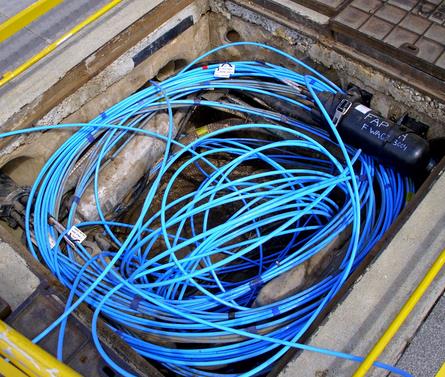-

- Sopto Home
-

- Special Topic
-

- Fiber Optics knowledge
-

- How does a fiber optic cable work?
Fiber Optics knowledge
- Maintained Methods of Fusion Splicer Parts
- How to Use the Fiber Optic Cleaver?
- What are Fixed Attenuators & Variable Attenuators?
- Deployable Fiber Optic Systems for Harsh Mining Environments
- Developing Miniature Fiber Optic Cable Has Become the Trend
- Fiber Optic Cleaning Procedures
- 6 Steps to Selecting a Fiber Optic Cable
- Signal Attenuation Introduction
- How Fiber Transmission Works?
SOPTO Special Topic
Certificate



Guarantee
Except products belongs to Bargain Shop section, all products are warranted by SOPTO only to purchasers for resale or for use in business or original equipment manufacturer, against defects in workmanship or materials under normal use (consumables, normal tear and wear excluded) for one year after date of purchase from SOPTO, unless otherwise stated...
Return Policies
Defective products will be accepted for exchange, at our discretion, within 14 days from receipt. Buyer might be requested to return the defective products to SOPTO for verification or authorized service location, as SOPTO designated, shipping costs prepaid. .....
Applications
Fiber Optis can be used in so many fields:
Data Storage Equipment
Interconnects,Networking
Gigabit Ethernet
FTTx, HDTV,CATV
Aerospace & Avionics
Data Transfer Tests
Network Equipment
Broadcast Automotive
Electronics,Sensing
Oil & Gas, Imaging
Outside Plant,Central Office
Harsh Environment
Data Transmission
Illumination,Institutions
Ship to Shore,Education
Simulation,Military,Space
Unmanned Aerial Vehicles
Semiconductor Equipment
Diagnostics & Troubleshooting
Premise Networks Carrier Networks
Independent Telecommunication Providers
SOPTO Products
- Fiber Optic Transceiver Module
- High Speed Cable
- Fiber Optical Cable
- Fiber Optical Patch Cords
- Splitter CWDM DWDM
- PON Solution
- FTTH Box ODF Closure
- PCI-E Network Card
- Network Cables
- Fiber Optical Adapter
- Fiber Optical Attenuator
- Fiber Media Converter
- PDH Multiplexers
- Protocol Converter
- Digital Video Multiplexer
- Fiber Optical Tools
- Compatible
Performance Feature
Fiber Optics knowledge
Recommended


How does a fiber optic cable work?
A fiber-optic cable is composed of many very thin strands of coated glass or plastic fibers that transmit light through the process of "cladding," in which total internal reflection of light is achieved by using material that has a lower refractive index. Once light enters the fiber, the cladding layer inside it prevents light loss as the beam of light zigzags inside the glass core.
Glass fibers can transmit messages or images by directing beams of light inside itself over very short or very long distances up to 13,000 miles (20,917 kilometers) without significant distortion. The pattern of light waves forms a code that carries a message. At the receiving end, the light beams are converted back into electric current and decoded.

Fiber optic cable in a pit
Uses include telecommunications medical fiber-optic viewers, such as endoscopes and fiberscopes, to see internal organs; fiber-optic message devices in aircraft and space vehicles; and fiber-optic connections in automotive lighting systems.
Fiber-optic cables have greater "bandwidth": they can carry much more data than metal cable. Because fiber optics is based on light beams, the transmissions are more impervious to electrical noise and can also be carried greater distances before fading.
The cables are thinner than metal wires. Fiber-optic cable delivers data in digital code instead of an analog signal, the delivery method of metal cables; computers are structured for digital, so there is a natural symbiosis. The main disadvantage is cost: fiber optics are much more expensive than traditional metal cable.
For more high quality and low cost fiber optics, please contact SOPTO.
Related Knowledge:
Fiber Optics’ Manufacturing Processing
Optical Fiber Horizontal cabling Guideline
Preparation before Striping and Cleaning Indoor Fiber-Optics Cable





